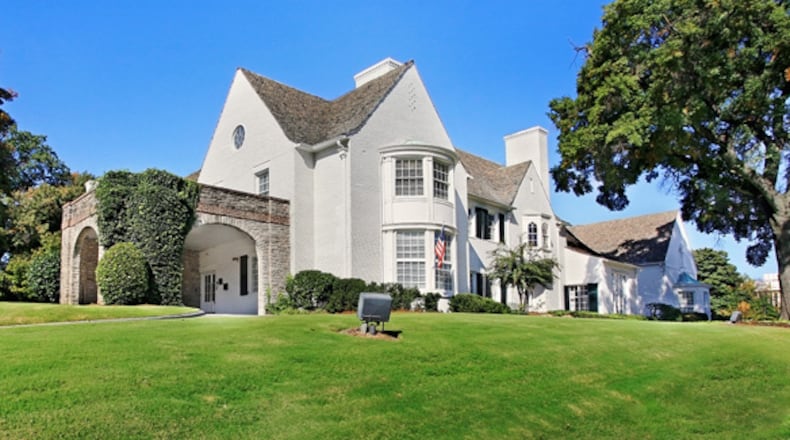Welcome to "Actual Factual," a column in which I answer reader questions about goings-on in Atlanta. Here's one I did about why an Atlanta band played on the Jackson Street Bridge at an ungodly hour.
Now that you're familiar, you'll find information for submitting your own questions at the bottom of this column.
Question: Why are Atlanta planners fighting to save a 90-year-old mortuary in the middle of the city?
The Atlanta Urban Design Commission is reviewing a proposal Wednesday that would give landmark status to a building that houses H.M. Patterson & Son funeral home in Midtown. The status would provide it with protections from demolitions, as the area becomes increasingly dense.
For a funeral home to get such special attention from the city is a pretty big deal. But it’s less surprising in this case, as the business has a long and storied history in Atlanta.
Hyatt M. Patterson established his funeral business in Atlanta in 1882. The business moved locations twice before Patterson’s only son, Fred, inherited the business in 1923. Fred Patterson would become the mortician to embalm Franklin D. Roosevelt after his 1945 death in Warm Springs, Georgia.
The Midtown location, known as Spring Hill Chapel, opened in 1928 — well before that area was populated by skyscrapers or MARTA. Today the white structure sits on a hill with a sprawling lawn and garden on the bustling corner of Spring and 10th streets.
Three other Patterson locations have opened in the decades since: Oglethorpe Hill Chapel in the 1960s, Canton Hill Chapel in East Cobb in 1985 and Arlington Chapel in Sandy Springs in 1996. Hugh Allen, the great-grandson of Hyatt M. Patterson, currently works as a funeral director for the firm.
The Spring Hill location was designed by the late architect Philip T. Shutze, who is famed for his many works including Swan House and Rhodes House. Spring Hill has held funerals for notable figures such as former mayors Ivan Allen Jr. and William B. Hartsfield, and Hartsfield's widow.
The funeral home has cemented itself in key historical moments. It is where, in 1988, a young man named Tom Fox made his funeral arrangments while battling AIDS. The moment was documented in “When AIDS Comes Home,” a 16-page extra section of The Atlanta Journal-Constitution.
The late Fox — an AJC advertising account representative — had been friends with Roger, an embalmer at the funeral home who said he’d already made similar arrangements for 20 friends.
“When AIDS Comes Home:” Steve Sternberg’s award-winning story, which was reported over 18 months in the late 1980s, can be read in Part I and Part II. Photos here.
The connection people have with the funeral home extends beyond Atlanta.
Cody Anderson, funeral director of a home in South Carolina, believes that the “level of architectural detail found in Spring Hill cannot be duplicated.”
“...both my former and current employer lived at Spring Hill while serving their apprenticeship,” Anderson said Wednesday. “The outreach of the Patterson legacy stretches all throughout our country.”
The effort to save the building is not new. In 2000, local preservationists fretted after there was speculation that the property had been put on the market. The executive director of the city's Urban Design Commission at the time said the funeral home did merit the historic designation of a landmark — but the commission had been too short-staffed to get to it.
Eighteen years later, they appear to be getting around to it.
Check back for updates.
I am a staff writer with the AJC and a lover of Atlanta, my adopted home for nearly six years after moving to Georgia from Florida. To submit “Actual Factual” questions, contact me at becca.godwin@ajc.com, @BeccaJGGodwin on Twitter or via the form below. Thanks.
Like Intown Atlanta News Now on Facebook | Follow us on Twitter
In other news:
Credit: AJC
About the Author
Keep Reading
The Latest
Featured



